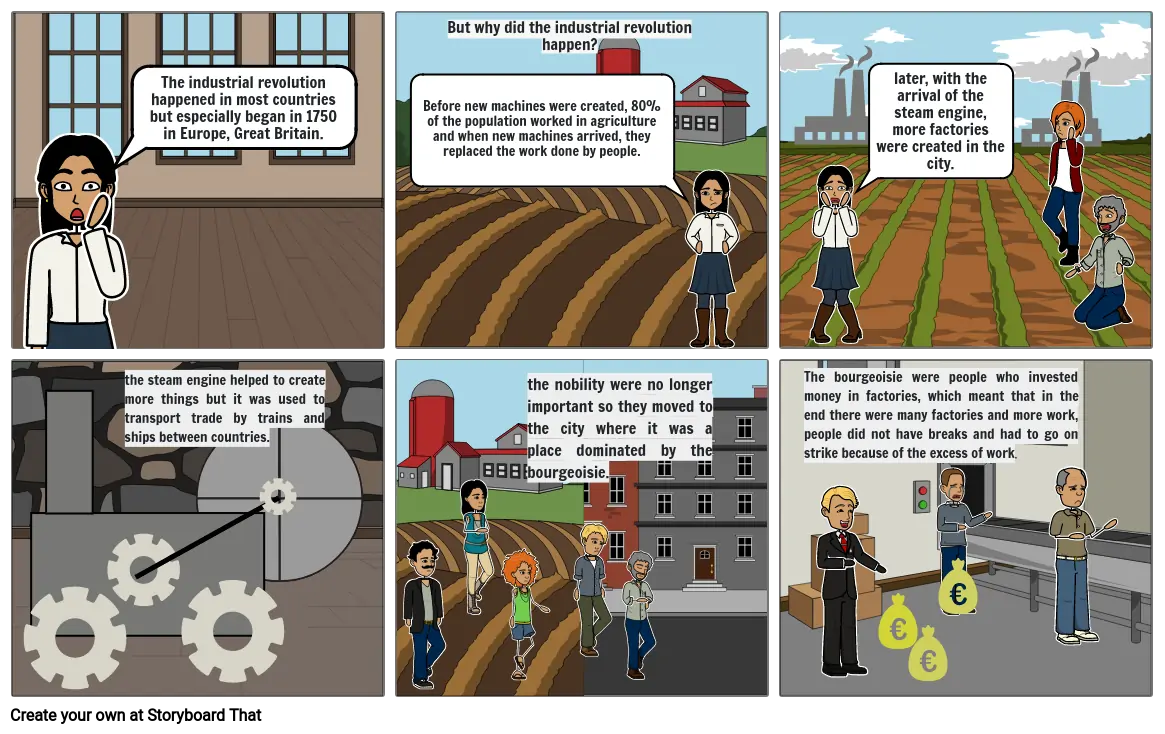INDUSTRIAL REVOLUTION PROYECT 1 COMIC CELESTE 3°E

स्टोरीबोर्ड पाठ
- The industrial revolution happened in most countries but especially began in 1750 in Europe, Great Britain.
- Before new machines were created, 80% of the population worked in agriculture and when new machines arrived, they replaced the work done by people.
- But why did the industrial revolution happen?
- later, with the arrival of the steam engine, more factories were created in the city.
- the steam engine helped to create more things but it was used to transport trade by trains and ships between countries.
- the nobility were no longer important so they moved to the city where it was a place dominated by the bourgeoisie.
- The bourgeoisie were people who invested money in factories, which meant that in the end there were many factories and more work, people did not have breaks and had to go on strike because of the excess of work.
30 मिलियन से अधिक स्टोरीबोर्ड बनाए गए

